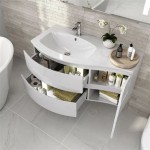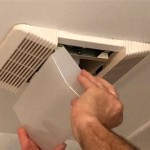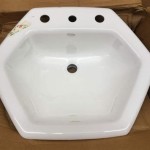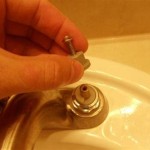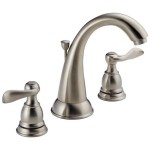How to Get Rid of Damp Walls in Your Bathroom
Damp walls in a bathroom are a common problem, and if left unaddressed, can lead to a host of issues ranging from cosmetic damage to serious health concerns. Dampness provides a breeding ground for mold and mildew, which not only look unsightly but also release spores into the air that can trigger allergies and respiratory problems. Moreover, prolonged dampness can weaken the structural integrity of the bathroom walls, leading to costly repairs. Effectively addressing damp walls involves identifying the sources of moisture, implementing preventative measures, and undertaking necessary repairs to eliminate existing dampness and protect against future occurrences.
Ignoring the early signs of dampness, such as peeling paint, musty odors, or visible water stains, will only exacerbate the problem. Prompt action is essential to prevent further deterioration and maintain a healthy and structurally sound bathroom environment. This article provides a comprehensive guide on identifying the causes of damp walls, implementing effective solutions, and adopting preventative strategies to ensure a dry and healthy bathroom.
Identifying the Sources of Dampness
Accurate identification of the source of dampness is crucial for effective treatment. The problem could stem from a variety of factors, each requiring a specific approach for resolution. Common sources of dampness in bathrooms include condensation, leaks, and rising damp.
Condensation is a frequent culprit in bathrooms due to the high humidity levels generated by hot showers and baths. Warm, moist air comes into contact with cooler surfaces, such as walls and mirrors, causing water vapor to condense into liquid. This condensation, if left unchecked, can saturate the walls and create a damp environment conducive to mold growth. Bathrooms with poor ventilation are particularly susceptible to condensation problems.
Leaks, whether from plumbing fixtures or external sources, represent another significant cause of damp walls. Leaky pipes, faucets, showerheads, or toilet connections can introduce water into the wall structure, leading to localized damp patches. Identifying and repairing these leaks promptly is essential to prevent further water damage. External leaks, such as those originating from roof damage or faulty window seals, can also penetrate the bathroom walls and contribute to dampness.
Rising damp, although less common in upper-floor bathrooms, can affect ground-floor bathrooms or those with concrete floors directly in contact with the ground. Rising damp occurs when groundwater is drawn up through the porous building materials of the walls via capillary action. This phenomenon is more prevalent in older buildings lacking a damp-proof course, a barrier designed to prevent moisture from rising up from the ground.
To pinpoint the source of dampness, conduct a thorough inspection of the bathroom, paying close attention to areas where water is frequently used or where leaks are suspected. Examine plumbing fixtures, pipes, and seals for any signs of leakage. Check the condition of the walls, looking for water stains, discoloration, or peeling paint. If rising damp is suspected, inspect the base of the walls for signs of moisture or efflorescence (a white, powdery deposit left behind by evaporating water).
Implementing Effective Solutions to Remove Dampness
Once the source of dampness has been identified, appropriate solutions can be implemented to eliminate the problem and prevent its recurrence. The specific approach will depend on the underlying cause of the dampness.
Addressing condensation requires improving ventilation and managing humidity levels. Installing or upgrading the bathroom exhaust fan is a crucial step. The fan should be powerful enough to effectively remove moist air from the bathroom during and after showers or baths. Ensure the fan vents directly to the outside, rather than into the attic or another enclosed space. Opening windows after showering or bathing can also help to ventilate the bathroom and reduce humidity. Wiping down wet surfaces, such as shower walls and mirrors, after use can further minimize condensation.
Fixing leaks is paramount to preventing further water damage. Repair or replace any leaky plumbing fixtures, pipes, or seals. Consider hiring a qualified plumber to address complex or hidden leaks. Ensure that shower and bath enclosures are properly sealed to prevent water from escaping and penetrating the walls. Inspect the grout and caulk around tiles and reapply if necessary to maintain a watertight barrier. If external leaks are suspected, address them promptly to prevent water from entering the bathroom from the outside.
Dealing with rising damp requires a more specialized approach. In some cases, injecting a damp-proof course into the walls may be necessary to prevent groundwater from rising. This involves drilling holes into the walls at the base and injecting a chemical sealant that creates a waterproof barrier. Improve external drainage around the building to prevent water from accumulating near the foundations. Consult with a qualified damp-proofing specialist to assess the situation and recommend the most appropriate course of action.
In addition to addressing the source of dampness, it may be necessary to repair any damage caused by the moisture. Remove any mold or mildew growth using a mold-killing cleaner. Repair or replace any damaged drywall or plaster. Repaint the walls with a mold-resistant paint to prevent future mold growth. Ensure that the walls are completely dry before repainting or applying any other finish.
Preventative Strategies for Maintaining a Dry Bathroom
Preventing dampness from recurring requires adopting proactive strategies to manage moisture levels and maintain a dry bathroom environment. These strategies include improving ventilation, managing humidity, and regularly inspecting and maintaining the bathroom.
Maintaining adequate ventilation is crucial for preventing condensation. Regularly use the bathroom exhaust fan during and after showering or bathing. Ensure that the fan is clean and in good working order. Open windows whenever possible to allow fresh air to circulate. Consider installing a dehumidifier in the bathroom to further reduce humidity levels, especially in bathrooms with poor ventilation.
Managing humidity involves taking steps to minimize moisture generation and promote rapid drying. Avoid leaving wet towels or clothing in the bathroom. Wipe down wet surfaces after use. Consider using a shower curtain or door that extends to the floor to prevent water from splashing onto the walls. Repair any leaks promptly to prevent water from accumulating in the bathroom.
Regular inspection and maintenance can help to identify potential problems early on and prevent them from escalating. Inspect plumbing fixtures, pipes, and seals regularly for any signs of leakage. Check the condition of the walls, looking for water stains, discoloration, or peeling paint. Ensure that the grout and caulk around tiles are intact and watertight. Clean the bathroom regularly to remove any mold or mildew growth. Address any issues promptly to prevent further damage and maintain a healthy bathroom environment.
Properly ventilating the bathroom, combined with diligent cleaning and upkeep, forms a comprehensive defense against recurring dampness. These practices not only safeguard the bathroom's structural integrity but also promote a healthier living environment by mitigating mold and mildew growth. Regularly checking for and addressing small leaks or condensation issues can prevent significant problems from developing over time.
Furthermore, the choice of materials used in bathroom construction and renovation plays a vital role in damp prevention. Selecting moisture-resistant drywall, paints, and flooring options provides an added layer of protection against water damage. These materials are designed to withstand high humidity levels and reduce the risk of moisture absorption, thereby contributing to a drier and healthier bathroom environment.
In addition to structural and material considerations, lifestyle adjustments can also contribute to damp prevention. Minimizing the amount of time spent in hot showers or baths can reduce the overall humidity levels in the bathroom. Encouraging family members to use the exhaust fan or open a window after showering can further enhance ventilation and promote rapid drying. These simple behavioral changes can make a significant difference in maintaining a dry and healthy bathroom environment.

How To Stop Damp In Bathroom Expert Guide From Timberwise

How Do You Get Rid Of Mould On Bathroom Walls Igloo Surfaces

How To Treat Damp Walls Before Painting Living By Homeserve

How To Get Rid Of Mould On Walls Permanently Decorator S Forum

Dealing With Damp In Bathrooms

Dealing With Damp In Bathrooms

How To Stop Damp In Bathroom Expert Guide From Timberwise

What Is Rising Damp How To Treat It

How To Get Rid Of Damp And Mould In Your Home Metro News

Tips To Get Rid Of Dampness In Wall A Guide By Berger Paints
Related Posts
